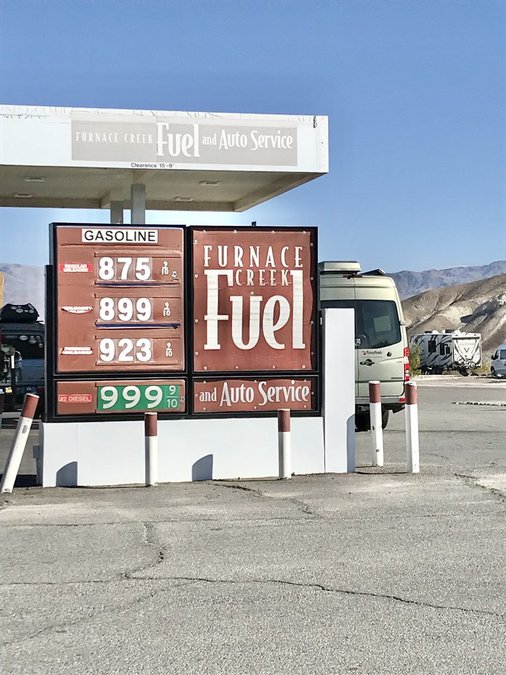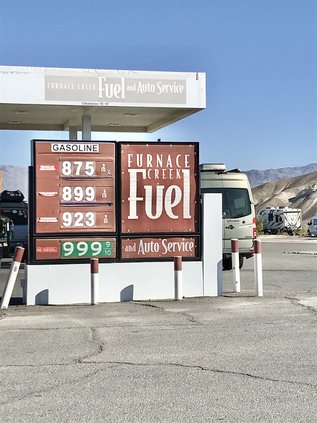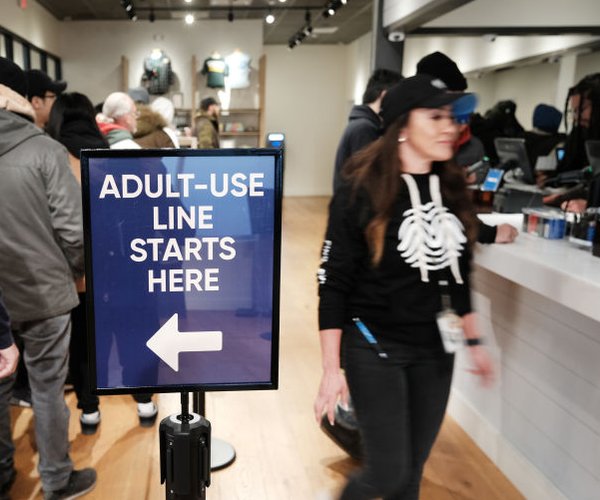Joe Lombardo may know a thing or two about placing a bad bet.
He’s the governor of Nevada, the state that pioneered legalized gambling.
Last week the Silver State governor signed onto a letter to his California counterpart, Gavin Newsom.
It was short and to the point.
Newsom’s plan to stick it to Big Oil over high gas prices will likely backfire in a big way.
And when it does, not only will it siphon more money out of the pocketbooks of California drivers that aren’t positioned well enough to buy an EV even with help from tax credits, but it would take down Nevadans as well.
California refineries supply 90 percent of Nevada’s gasoline.
Lombardo happens to be a Republican.
But Newsom is in no position to dismiss his concerns as some crackpot running a state that’s more red than blue.
It’s because the other signature on the letter was by Katie Hobbs.
She’s the governor of Arizona.
And she’s a solid Democrat.
Arizona, it turns out, relies on California refineries for 50 percent of its gasoline.
It’s not very often that a Democrat and Republican governor these days are in complete agreement on basic economic issues.
But then Newsom’s plan to cushion future price hikes by storing more gasoline when there are supply shortages or maintenance that needs to be done to keep refineries working smoothly and safely is myopic at best and borderline fantasy at worst.
California refineries currently maintain a two weeks supply of gasoline.
Stockpiling more becomes problematic for a variety of solid reasons.
First, the shelf life of gasoline ranges from three to six months.
Newsom’s plan would essentially require oil firms to constantly produce more fuel beyond market demands.
It would add to costs and also add to the wear and tear of refineries that require maintenance.
No worries, legislation Newsom is advancing is designed to cover his bet.
If it passes, state bureaucrats will be given the power to bar refinery maintenance from occurring if supplies are too low.
The California Energy Commission was quick to dismiss such power being given to bureaucrats as it has a strong potential of going sideways.
Delaying needed maintenance, the commission argues, would lead to more refinery accidents that in turn would raise gas prices by leading to even longer shutdowns.
To quote the commission, the governor’s proposal “may artificially create shortages in downstream markets.”
The state energy folks also predicted it would result in the increase of average retail prices.
In other words, Newsom’s plan to increase gasoline stockpiles as a cushion against shortages will mean less relief from high gas prices.
Then there is the issue of where to store additional gasoline that is not heading to a gas station within two weeks.
It costs close to $35 million to build one gas storage tank.
And based on the extensive front end environmental review process involved that includes communities where refineries are located unlikely to want more gas storage tanks, getting a new tank in place can easily take a decade.
That, of course, brings us up to the year 2035.
Perhaps Newsom has forgotten the significance of that year.
It’s the year he declared no new vehicles powered by fossil fuels will be allowed to be sold in California.
Given the average lifespan of a gas-powered vehicle is 15 years and that last year one out of every four new vehicles sold in California were electric, gasoline demand will be on the decline before 2035 rolls around.
That means less consumers to bear the cost of $35 million for each new storage tank state bureaucrats deem necessary.
In basic Economics 101 lingo, that means higher gas prices.
Not only that, Newsom has essentially told Big Oil they will go the way of the Woolly Mammoths at the bottom of the La Brea tarpits but in a much more compact time frame.
In their letter to Newsom, Lombardo and Hobbs state, “For the good of our neighboring constituencies, and for the greater good of consumers across the West, we ask that you reevaluate mandating refinery inventory.”
Any action that Sacramento takes against Big Oil that boomerangs will hit Nevadans and Arizonians in the pocketbook as well as Californians.
The AAA gas survey on Tuesday put the national gas price average per gallon at $3.21 per gallon.
California reclaimed the top state for costly gas by leapfrogging over Hawaii to place 14 cents between the Aloha State and what the $4.77 average Californians pay.
Despite having some of the lowest gas taxes in the country, Nevada was at $4.00 a gallon and Arizona at $3.41.
It should be noted Lombardo and Hobbs aren’t decrying every move California makes against Big Oil will have a costly ripple effect on their states.
Neither have sent Newsom letters protesting a looming Jan. 1, 2025 January mandate on Big Oil that is expected to move the needle upward on gas prices.
That’s when the California Air Resources Board will begin enforcing At-Berth Regulations mandating ocean-going tanker vessels in Southern California ports cut emissions using shore power or CARB-approved technologies.
The overall tanker fleet serving California is not equipped to use shore power.
And, according to the oil industry and various port officials, there is insufficient infrastructure in place to supply the needed electricity even if tankers were equipped to use it.
The Western States Petroleum Association has warned that “without a feasible way to comply, companies could be forced to substantially limit ship visits. This may lead to a significant decline in supply of crude and other transportation fuel products needed to meet the state’s energy demand.”
Any guesses on who Newsom might blame of gas prices spike in early 2025?
The fact state-imposed regulations mandating something that can’t be done due to insufficient infrastructure which in turn will drastically reduce the number of tankers carrying crude oil to California won’t be slammed by Newsom.
Instead, he’ll blame it on Big Oil that is scorned virtually by anyone in California who gets whiplash watching numbers reflecting the running total of gas as it is being pumped.
This column is the opinion of editor, Dennis Wyatt, and does not necessarily represent the opinions of The Bulletin or 209 Multimedia. He can be reached at dwyatt@mantecabulletin.com






